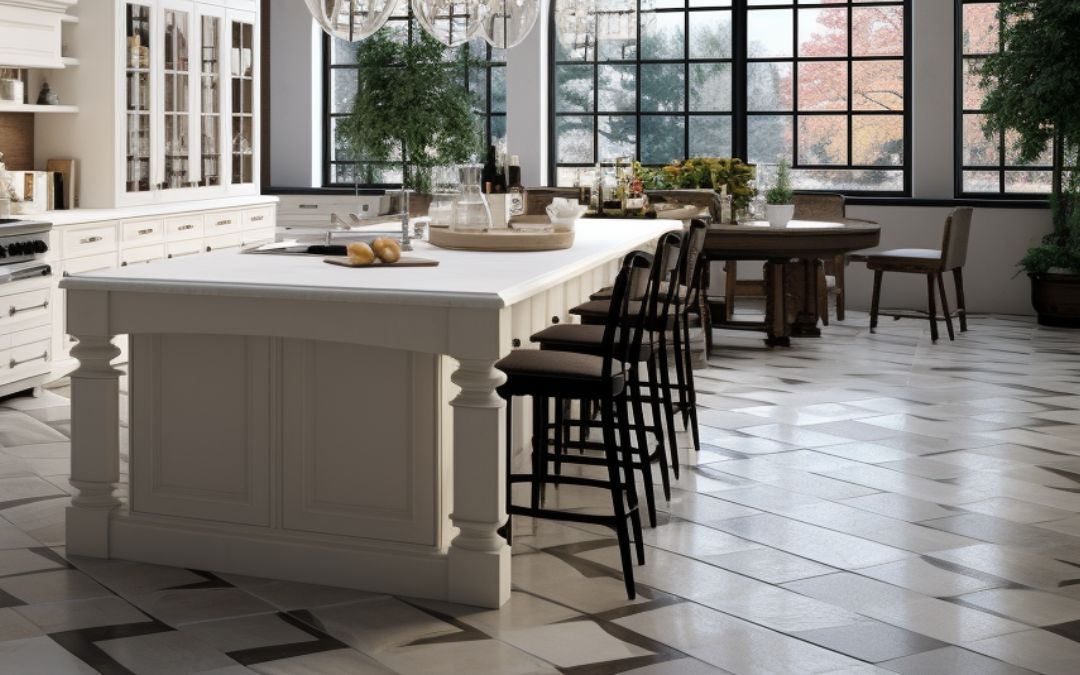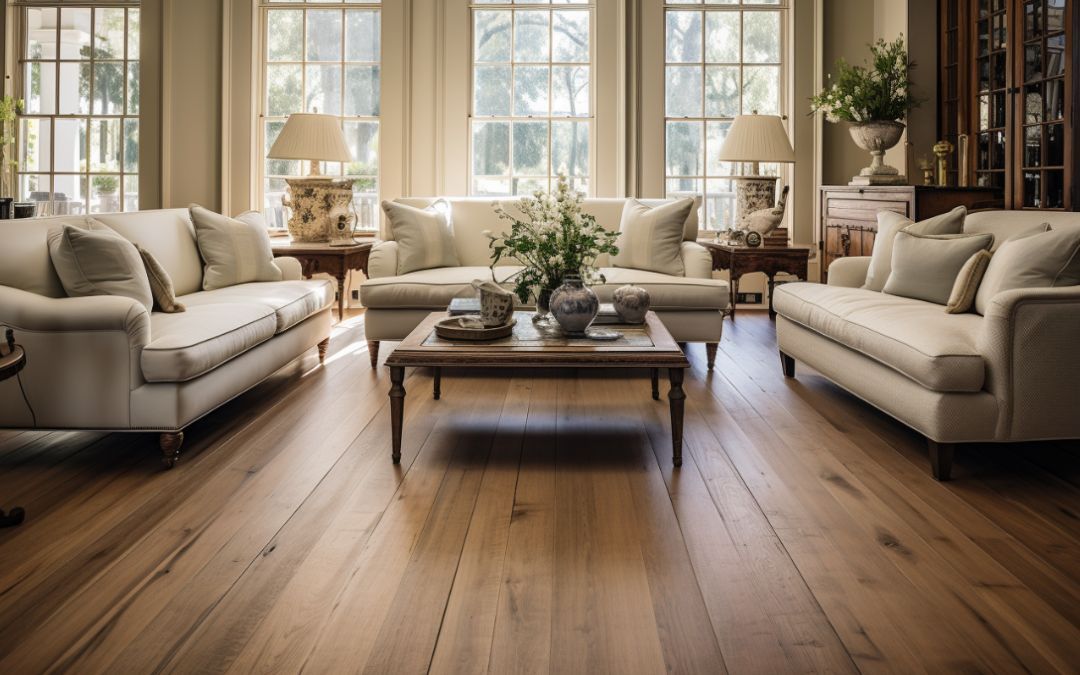New Year, Fresh Tiles: Refreshing Your Floors for 2024
Having fresh-looking, sparkling tiles can not only enhance the aesthetics of a room but also improve the functionality of a space. In addition, understanding the trends in tile styles and designs for the upcoming year can help make designing a space much easier. And lastly, knowing the difference between professional and DIY cleaning and refresh methods, as well as the top tile care tips for the year, can ensure that tiles stay pristine and glossy for years to come.
The Visual and Functional Impact of Fresh Clean Tiles
Fresh clean tiles can have a tremendous visual and functional impact in a range of settings. On the one hand, the brightness and shine of a newly installed tile floor can bring a room to life, catching the eye and providing a much more stylish and contemporary feel than an older floor. Similarly, in a kitchen, new tiles can quickly and drastically improve the aesthetic, giving the room a much more modern look. Tiles come in a wide variety of colors, shapes and sizes, making it easy to find the perfect option for a particular setting.
In addition to improving the look of the interior, fresh clean tiles can have a significant functional impact. For instance, prior to installation, tiles are applied with a grout that can make them nearly impervious to water spillage. They create a water and moisture-resistant surface that can be an important barrier in rooms where water or humidity are an issue. Tiles easy-to-clean surface is also a benefit, making them quick and efficient to clean and maintain.
As a result of their water-resistant and easy-to-clean characteristics, fresh clean tiles remain a popular choice in a wide range of settings. They have become the go-to surface for bathrooms, toilets, kitchens and even outdoor living areas, cementing their place as an essential material for many households and workspaces.
Trending Tile Styles and Designs for 2024
Tile styles and designs are constantly evolving; in 2024, tile choices will be more vast and modernized than ever before. One emerging trend is glossy porcelain tiles, which are glossy and hard wearing. In addition, muted colors such as greige, mauve, and gray are becoming increasingly popular choices in both contemporary and traditional designs. Likewise, 3-D tiles are becoming a trend, offering interesting designs and textures. As a result, these textiles offer beautiful visual impact and are the perfect accompaniment to minimalist designs.
However, artistic tile designs are growing in popularity as well. Mosaic tile designs, which are colorful and intricate, are a popular choice for bathrooms, entryways, and kitchens. Metallic tiles in bold geometric shapes are being used to create eye-catching patterns, and feature walls. Similarly, classic subway tiles are also still popular, with many opting for larger sizes to create a modern look.
Lastly, wooden tiles are increasingly being used in floors, walls, and countertops. Made from real wood, these tiles add warmth and sophistication to any space. Similarly, terracotta tiles are still in high-demand, with French pattern styles being particularly popular. Consequently, these tiles never go out of style and bring a timeless charm to any space.
Professional vs. DIY: Tile Cleaning and Refresh Methods
Tile cleaning and refresh methods serve an important role in maintaining the condition of both interior and exterior tile surfaces. Professional tile cleaning and refresh methods are often the more effective and efficient tactic due to the preference of using specialized cleaning and sealing supplies, as well as the knowledge and skill about the best practices necessary for achieving the highest level of cleanliness and longevity. However, DIY tile cleaning and refresh methods may be utilized when the owner is willing to apply the necessary time and effort needed to achieve satisfactory results.
Professional tile cleaning and refresh services often include the use of specialized power washing equipment. These power washing systems may use pressurized water, steam, and even caustic chemical solutions to remove dirt and debris from even the most heavily soiled tile surfaces. Moreover, professional tile cleaning technicians can pre-treat the tile with specially formulated detergents and cleaning solutions designed to loosen up dirt, grime, and mildew during the process. In addition, these technicians may then spray on a sealant to protect the tile against future stains and discoloration.
In contrast, do-it-yourself tile cleaning and refresh methods more commonly include the use of simple cleaning supplies such as a scrub brush, vacuum, mop, and all-purpose cleaning solution. These cleaning supplies are typically designed to removes dirt and debris that has collected on the tile surface. A DIYer may also opt to use a sealant after the tile cleaning process as an extra layer of protection. For instance, any sealant chosen should be rated for the type of tile in the space, such as natural stone or ceramic tile.
Therefore, when comparing professional and DIY tile cleaning and refresh methods, it is important to consider the type and condition of the tile being serviced upfront. Doing so will help to determine the effectiveness of which Route is more suitable for the given task. Similarly, it’s important to be aware that the results received from DIY and professional tile cleaning and refresh methods may differ depending on the type of method used. Consequently, individuals opting for the DIY route should test the product in a small area before using it on an entire surface to ensure the desired results are achieved.
Maintaining the Gleam: Top Tile Care Tips for the Year
Tile is an attractive and practical way to add to the overall aesthetic of one’s space; however, it requires extra care and maintenance to remain in optimal condition. Cleaning and preserving tile is essential for maintaining its gleam, and not too difficult of a task as long as it is done on a regular basis. Here are some tips to help keep the tile in your home looking fresh and pristine throughout the year.
Firstly, it is important to use the proper cleaning materials for the kind of tile surfaces you have. Cleaners that are safe for any type of tile are non-acidic, non-abrasive all-purpose cleaners. To spare yourself from the task of washing each tile – which can take a very long time – spot cleaning should be done frequently instead. This means that spots and dirt should be wiped away as soon as you notice them, as this will keep the dirt from settling and becoming harder to clean.
One should be aware of the savings to be made from frequent mopping and sealing. Grout lines are especially prone to staining, and to prevent this it is essential to use sealers on them annually. Sealing the grout with penetrating sealers prevents binding and staining. On the other hand, scrubbing tile floors weekly with a gentle detergent and water is especially important to help prevent dirt and moisture buildup that can lead to mildew or bacteria.
Finally, it is important to take special care in selecting deep-cleaning products for use on tile. Common household items such as vinegar and baking soda can effectively clean and restore the shine of tile. For tough stains, a professional-grade cleaning product, along with a weighty brush, can break down stubborn dirt and grime.
Tile is a wonderful addition to any home, and proper maintenance is key to keeping it looking good for years. Regular cleaning, sealing, and selective deep cleaning are all effective techniques for preserving the gleam of and extending the life of any tile surface.
Final Thoughts
Freshening up clean tiles can have a significant visual and functional impact on a space. Tile styles and designs can help homeowners to stay up-to-date with the trends that are emerging for 2024 and can be a great way to refresh the look of a room. For those who want to restore the tiles more quickly, the debate between professional versus DIY tile cleaning and refresh methods can be an important point to consider. An important key to having lovely tiles in 2024 is to make sure they are well-maintained with proper cleaning and care throughout the year.
Frequently Asked Questions
How can I determine if my tiles need a full deep clean or just a refresh?
The best way to determine if your tiles need a full deep clean or just a refresh is to examine the condition of the tiles. If there is buildup of dirt, grease, and grime that cannot be easily removed, then you will likely need to perform a full deep clean. If there is just a light dusting of surface dirt that is easy to remove, then a refresh may be enough.
What are the most durable types of tiles suitable for high-traffic areas?
The most durable types of tiles for high-traffic areas are porcelain, quarry, and stone tiles. Porcelain tiles are extremely dense and resistant to staining and wear-and-tear, making them an ideal choice for high-traffic areas. Quarry tiles are made from clay and also offer a high degree of durability and stain resistance. Stone tiles, such as granite and marble, are also incredibly strong and resistant to scratching and cracking.
How often should tiles be professionally cleaned or refreshed?
Most professionals recommend having your tiles professionally cleaned or refreshed every 12-18 months in order to keep them looking clean and fresh. Depending on your type of tile, some may require more frequent cleaning. It is also important to clean up spills and spots as soon as possible in order to prevent staining.
What are some eco-friendly options for tile flooring in 2024?
Some eco-friendly options for tile flooring in 2024 are ceramic, cork, bamboo, linoleum, and recycled glass tile. Ceramic tile is a popular and affordable choice that is durable, non-toxic, and recyclable. Cork and bamboo are two more eco-friendly alternatives that are gaining in popularity due to their sustainable harvesting and natural antimicrobial properties. Linoleum tile offers a unique, natural look that is durable and easily renewable. Lastly, recycled glass tile is an excellent choice for homeowners looking for a vibrant and multi-dimensional display that is also environmentally conscious.






